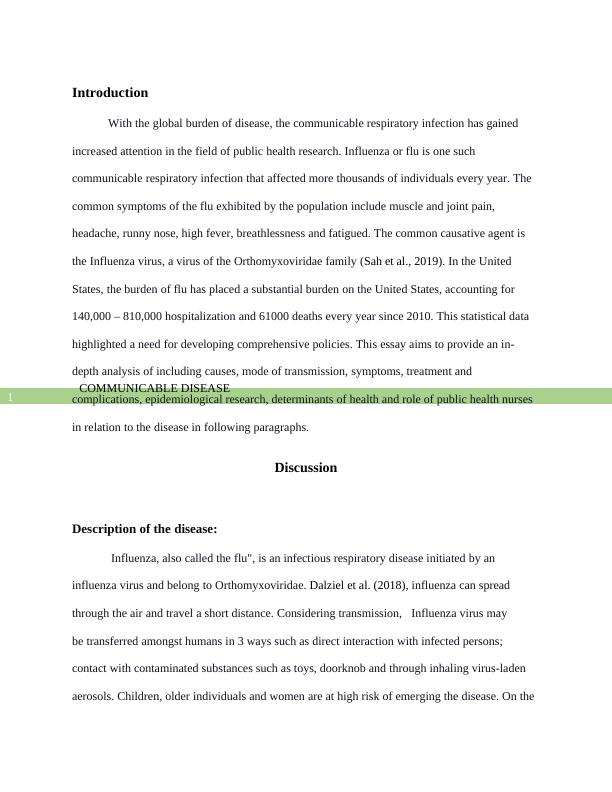Communicable diseases: Types, symptoms, prevention
Write a scholarly paper applying epidemiology and nursing research to a communicable disease, including a thorough description of the disease, discussion of demographic most affected, identification of the epidemiologic triad, and the role of the public health nurse.
7 Pages1806 Words34 Views
Added on 2022-08-26
Communicable diseases: Types, symptoms, prevention
Write a scholarly paper applying epidemiology and nursing research to a communicable disease, including a thorough description of the disease, discussion of demographic most affected, identification of the epidemiologic triad, and the role of the public health nurse.
Added on 2022-08-26
ShareRelated Documents
End of preview
Want to access all the pages? Upload your documents or become a member.
Viral Infection: Influenza Virus
|10
|872
|86
Essay on Various Causes of Influenza
|6
|2113
|57
Epidemiology: Influenza
|12
|3013
|52
Evaluation of Annual Influenza Vaccination for Older Adults and Community Nurses
|10
|2934
|151
Influenza in India - Essay
|12
|4240
|181
Assignment about Influenza Infection
|6
|1264
|36



